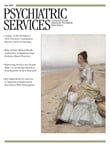Suicide in Japan
To the Editor: Many previous studies have found mental disorders to be the most powerful risk factor for suicide in all age groups, accounting for 80% to 90% of all completed suicides (
1,
2,
3 ). To inform prevention efforts, it is important to determine the rate of psychiatric treatment among persons who commit suicide and to document demographic characteristics of those who do not receive treatment. However, to our knowledge no longitudinal study has examined these issues in a large sample over a long period.
We examined data on gender, age, and psychiatric treatment for all suicide victims over 21 years of age (N=5,161) from 1981 to 2001 in the city of Kobe, Japan (population of approximately 1.5 million in 2003). Data were compiled by the Medical Examiner's Office of Hyogo Prefecture and published in its annual reports. Statistical analysis was performed by using t tests and chi square tests. A probability level of .05 was regarded as statistically significant. The data were analyzed with SPSS software, release 10.07J. This study was approved by the ethical committee of Niigata University Graduate School of Medical and Dental Sciences.
Three-quarters of persons who completed suicide (73.7%) did not receive psychiatric treatment in the year before the suicide. The rates of psychiatric treatment in the sample were almost constant over the study period. Psychiatric treatment was more common among females than males (39.9% and 19.3%, χ 2 =252.0, df=1, p<.001). Elderly persons who completed suicide, especially those in their seventies and eighties, were significantly less likely than younger persons to receive psychiatric treatment in the year before suicide ( χ 2 =195.3, df=1, p<.001). Middle-aged persons —those in their forties and fifties—who did not receive psychiatric treatment in the year before suicide accounted for 30% of all completed suicides; more than 80% of this high-risk group was male.
The psychiatric treatment rate in this study was much lower than those in previous studies, which ranged from 45% to 60% (
4 ). However, Asukai (
4 ) found a treatment rate of 22.9% among Japanese persons who attempted but did not complete suicide, although the sample was very small. Thus Japanese persons who attempt suicide tend to be less likely to receive psychiatric care than those in Western countries. Recently, Kobe has become one of several large Japanese cities in which many psychiatric clinics are available. Despite this trend, three-quarters of those who committed suicide over the past two decades in Kobe did not receive psychiatric treatment. Although low rates of psychiatric treatment among persons who commit suicide can sometimes be attributed to a lack of psychiatric clinics, this is not the case in Japan. In addition, suicide does not void large payouts by life insurance companies in Japan (
5 ), which may spur some persons to commit suicide to maintain the economic welfare of their families. In Japan, therefore, it is very important to build a system of public health care and encourage persons with suicidal ideation to consult a psychiatrist. Efforts to improve suicide prevention strategies among middle-aged men are especially needed.
Acknowledgments and disclosures
This study was supported by grant 19203031 from the Japan Society for the Promotion of Science and by a grant from the Research Center for Natural Hazards and Disaster Recovery, Niigata University, Japan. The authors thank Akiyoshi Nishimura, M.D., Ph.D., Hideyuki Nushida, M.D., and Yasuhiro Ueno, M.D., Ph.D., for their special contributions in advancing this study.
The authors report no competing interests.

